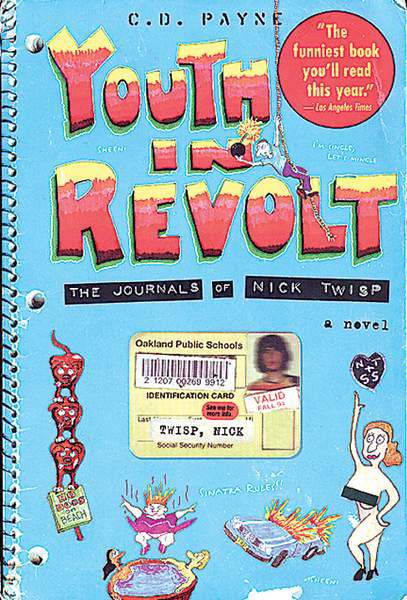Coming of age
Published 4:00 am Friday, January 8, 2010

- Coming of age
Seventeen years after novelist C.D. Payne completed “Youth in Revolt: The Journals of Nick Twisp,” his humor magnum opus, the film version is finally hitting the big screen.
The film “Youth in Revolt” stars Michael Cera as the revolting youth in question, and opens today at select and discerning theaters.
Trending
Cultish devotees are enjoying a heady mix of anticipation and anxiousness, even as they watch the promising trailers again and again on YouTube. As author Payne wrote on his Web site, www.nicktwisp.com: “Yeah, I’m hoping they don’t blow it too.”
Nick Twisp — the pimpled, insecure, yet oddly resourceful hero of “Youth in Revolt” — inspires that kind of devotion.
As a birthday present to myself, I’m taking the day off and catching at least one matinee. I may even channel my inner Nick Twisp and sit straight through for a second screening, or tip over someone’s popcorn tub in a fit of pique.
In a nutshell, Nick Twisp provides vicarious adolescence for those of us who were too preoccupied by everything else going on then to focus on what was important: causing trouble and the opposite sex, not necessarily in that order. Payne says he wrote it with his Baby Boomer peers in mind as an audience, but plenty of young adults have found their way to the title anyway.
I first stumbled upon the name “Nick Twisp” in 1996. At the time, I made a mental note to buy that funny-sounding book about a 14-year-old Oakland boy whose hormones and love for a girl named Sheeni compel him into a hilarious cascade of misdeeds, all in the name of winning the love of an intellectual Francophile light years ahead of him in maturity, if not humor, irreverence and self-reliance.
I forgot all about it until, seven years later, I recognized the title while browsing the fiction aisle at Powell’s Books in Portland.
Trending
I didn’t stop reading the entire three-and-a-half-hour trip back to Bend except for giddy glances at the other shuttle passengers.
I’ve always had a weakness for coming-of-age novels, but “Youth in Revolt” was the first one that read like an R-rated “Tom Sawyer,” replete with intelligent prose, fantastically funny dialogue and valiant deeds in the name of losing one’s virginity before all of one’s hair falls out.
Surprisingly, the comic plot sustains itself through nearly 500 pages. As the title suggests, it’s written as a series of journal entries by the young, randy and ready Nick, beginning on the cusp of his 14th birthday.
Sample paragraph — Nick discussing his mom’s trucker boyfriend, Jerry, played by Zach Galifianakis (“The Hangover”) in what looks to be a (beer) gutty performance: “After 12 years with Dad, Mom apparently decided she needed a less intellectual consort. Not that Dad’s nonstop cultural one-upmanship qualifies him as a deep thinker. His mind ranges widely: from arid to vapid, with stops at banal, insipid, and shallow. But Jerry’s gray matter doesn’t even register the gauge. The needle sits there at Cretin and doesn’t budge.”
Here’s Nick on sports: “Mom persists in believing I will someday bring glory to the family on the playing fields of a grateful nation. Have I confessed to her that I’m always the last guy picked when they choose up sides? Yes. Have I abased my manhood by admitting to my mother that I throw like a girl? Yes. Does she listen? No! Just keep giving me mitts and someday I’ll turn into Rollie Fingers. What I can’t understand, if she wanted to breed jocks, why did she mate with a dork like Dad? He needs professional coaching just to pull a jockstrap on straight.”
Biggest fan
Once finished, I was depressed in that singular way you are after reading the best books. So I immediately went to Payne’s Web site and ordered the self-published sequel and another humor novel of his, “Frisco Pigeon Mambo,” which may also make it to film.
I’m nobody’s proselytizer, but like many fans, I began foisting “Youth in Revolt” on everyone. I sent my dad and sister copies, and my own has circulated regularly among Bulletin colleagues.
The reactions aren’t always as positive as my glowing reviews, and the easily offended definitely need not apply. The book is like a barrage of irreverence fired directly into your cerebral cortex. Vandalism, atheism, pervy religious figures, teen sex, cross-dressing, unfettered Sinatra worship? It’s all there. Preachy, screechy parents? Yes. Hypocritical adults? Check. Elderly socialist neighbors? Uh-huh. X-rated similes? Indeed! Dismissiveness toward conservatives? You betcha!
Nick is a thinking man’s rebel, and his conscience compels him to create an alter-ego or two. In the film version, this is neatly handled by retrofitting star Cera (“Superbad,” “Juno”) with a mustache, white slacks and a powder-blue polo, all evoking the mischievous Francois Dillinger. Nick’s French-fried alter-ego, a cad with a heart of steel, converses with Nick and, judging from online clips, steals the scene. Early reports say that Cera’s acting “expands upon his now-typical screen persona,” according to Slashfilm.com.
That’s right. Cera plays a badass. So even if you longed to see him grow a pair of longer shorts in “Juno,” have faith. A longtime proponent of getting the film made, Cera recently told Canwest News Service that Payne’s novel has “a totally unique voice and a totally unique tone, and you trust it all the way through. You trust that he’s going to get you through all these crazy things that he’s setting up.”
After I wrote about “Youth in Revolt” for The Bulletin’s annual gift guide in 2003, I sent Payne an e-mail alerting him to my shameless plug for the best English language book written in the 20th or any other century.
“Thanks for your kind words about Nick,” he replied. (Yes, I saved the e-mail.) “You might be interested to know I’m writing another Nick installment to be titled ‘Young and Revolting.’ It concerns Nick’s married life with Sheeni in Paris. Look for it in 2005?”
To which I shamelessly responded, “If you need someone semi-literate to read a chapter, I’m your guy.”
He asked how my proofreading skills were, I surely exaggerated their awesomeness, and before long, an unbound copy of the second bona-fide “Youth in Revolt” sequel, arrived in the mail. This was the geeked-out fanboy’s key to the kingdom, the humor equivalent of being a young vampire enthusiast who gets to read a “Twilight” installment, only with sharper prose than teeth.
‘Very fun movie’
Payne, who didn’t write the screenplay but has a cameo as a neighbor of Nick’s, has already seen the finished film.
His verdict: He liked it. “I had seen an earlier cut, before they did the reshoots, and I thought it was much improved. So I think it’s a very fun movie.”
He feels that the film has a strong cast, one that includes Fred Willard, Ray Liotta and Justin Long (the Mac commercial guy). Newcomer Portia Doubleday plays Sheeni Saunders, the object of Nick’s obsession, and Steve Buscemi is his high-strung, cradle-robbing dad, George Twisp.
Payne says it’s George with whom he most identifies.
Nick’s character, he says, “just kind of evolved on the page. I had always done short things before that, so I thought I would give something longer a try. And it turned out that I was more suited to the longer form than short form.”
When he started writing the book in 1990, he was a catalog writer for The Sharper Image, where he worked for 15 years. “I was working three days a week so I would have four days off. I would write on the weekends and sort of think about plot problems on the job.”
Each of the three volumes — “Youth in Revolt” is subdivided into three books, clumped together — took about a year to write. When his agent couldn’t get it published, and his efforts to land two other agents didn’t work, he decided to self-publish.
Thinking it would help him land more reviews, he published it in hardcover, which cost him much more than if he’d done it in paperback.
“I had 3,000 copies printed, which showed up in my house on a big semi, on five pallets,” he says. He spent a few more years promoting and selling it himself. A new agent garnered interest from three publishers, and it was published by Doubleday in 1995.
After his original Doubleday editor left, the replacement editor turned down his pitch for a sequel, so what did Payne do? He went right back to self-publshing: first, “Revolting Youth,” a zany, fast-paced complement to the first book that sold more than 15,000 copies, “which is a lot for a guy in his garage,” says Payne.
It was followed by “Young and Revolting” and “Revoltingly Young.”
“Youth in Revolt” has gone into more than 20 printings, Payne says, and the latest edition has Cera in character on the cover.
“If they like the movie, I hope they go out and read the book,” he says. “Because you get the full story in the book.”
I know your next question, and the answer is no. Get your own copy.






